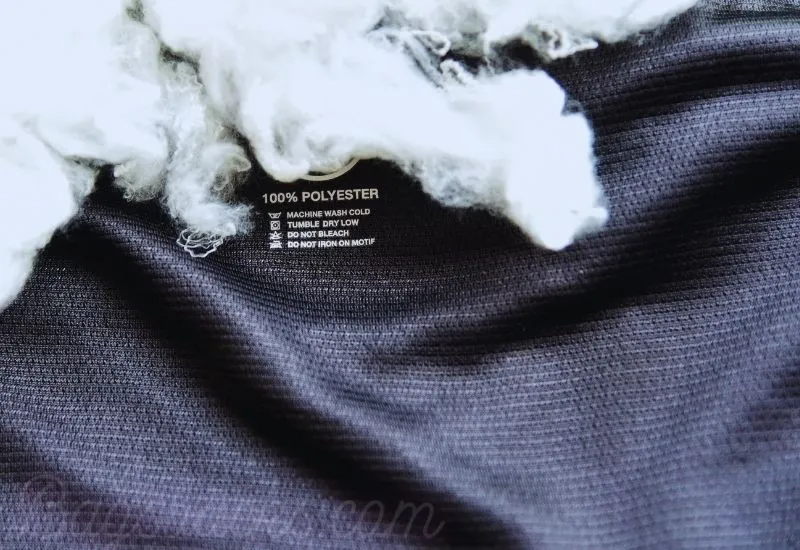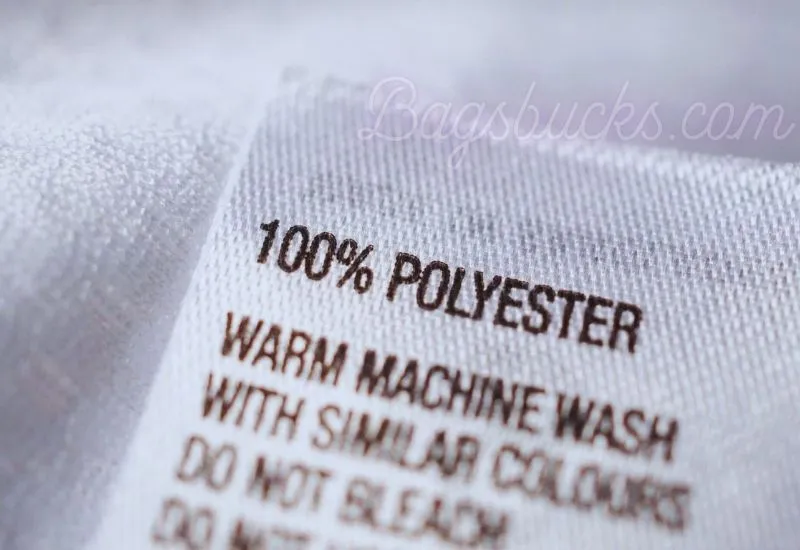
Edited by Abdullah Faraz on July 20, 2024
From handicrafts to shirts, jackets, jeans, and furniture, polyester is a part of our daily lives. Therefore, proper knowledge and understanding of polyester are mandatory for every individual.
Improper use or wrong selection of a polyester product may lead to heat rash, respiratory issues, or skin problems. Due to its poor breathability, a damp condition in the body can cause bacterial or fungal infections.
In this blog, we aim to inform you about the health risks associated with polyester, along with providing tips and preventive measures.
About the Polyester
Polyester, a man-made fiber, was invented in the mid-1930s. Until the 1950s, it was a new fabric. From the 1990s to onward it became a major ingredient in the fashion industry.
Now, it covers almost more than half of the textile industry.1
Health Impacts of Polyester

As previously mentioned, polyester is a synthetic fabric. So, like other synthetic materials, it also has negative effects on human health.
Skin Irritation and Allergies
An allergy is a response of the immune system to typically harmless foreign agents. That agent is known as an allergen. The purpose of this reaction is to remove or kill the suspected particle from the skin.
Contact with polyester can trigger an allergic reaction, known as textile dermatitis. The cause of dermatitis may be the additives used in the process of polyester manufacturing or chemicals/detergents used in laundry.
Symptoms of Polyester Allergy
The symptoms of textile dermatitis also appear predominantly on the skin, like other contact allergies. If you suspect that you have a contact allergy to polyester, then keep an eye on these symptoms:
- Rashes on areas that are in direct contact with polyester
- Warm feeling on the skin abnormally
- Itching may be mild to severe
- Red marks on your legs
- Hives around the upper body
The symptoms of the skin allergy may become severe by:
- Warm clothes or heating of the skin
- Tight clothes; obstructed skin ventilation
- Excessive moisture on skin moisture
- Poor hygiene
- Obesity
Chemical Exposure to Polyester
Other than skin allergies, chemicals used in polyesters (e.g., antimony, formaldehyde, polyethylene terephthalate, and phthalates) may lead to the following health issues:
- Tightness or pain in the chest
- Breathing difficulties
- Swelling in body parts
Besides contact allergy and chemical toxicity, polyester can also be problematic for you in terms of breathability and comfort. Because polyester is less breathable and comfortable as compared to other natural fabrics.
SUMMARY
Polyester or polyester clothes may be harmful to you, If your parents are allergic to such materials (you are genetically allergic and have sensitive skin), then you are at more risk. So, always use products that are compatible with your body.
Environmental Impact of Polyester
Polyester products are not safe for the environment as it is not for health. They have the following potential risks:
Production Process
Polyester is derived from petroleum. It totally relies on non-renewable resources. The depletion of fossil fuels is a first and major drawback of this process. Moreover, chemical reactions in this process emit a lot of greenhouse gasses.
Toxic chemicals used in the manufacturing process also affect the water resources.
Microplastics and Marine Life
Polyester fibers shed microplastics during washing (especially recycled polyester releases more microplastics), which enter waterways and oceans. These microplastics are ingested by marine organisms, causing physical and chemical harm.
Microplastic pollution is a significant environmental issue, affecting ecosystems and human health. It damages gastrointestinal cells, airway tissues, and immune cells.2
Waste and Recycling Process
Polyester is not biodegradable. This means that polyester products contribute to landfill waste and take hundreds of years to decompose. The accumulation of polyester in landfills creates long-term environmental problems.
SUMMARY
In a nutshell, polyester is not environmentally safe. It leads to resource depletion, water pollution, and damage to marine life. To save the earth and our environment, we should consider alternatives to polyester.
Alternatives to Polyester

Several alternatives to polyester offer various benefits in terms of comfort, sustainability, and health. Here are some common alternatives:
Cotton
Pros: Natural, breathable, soft, hypoallergenic, and biodegradable.
Cons: Cotton requires significant water and pesticide use unless it is organic.
Linen
Pros: Natural, breathable, moisture-wicking, durable, and biodegradable.
Cons: Can wrinkle easily and may feel rougher to the touch.
Hemp
Pros: Natural, breathable, strong, antimicrobial, and biodegradable.
Cons: It can be rough initially but softens with wear and washing.
Bamboo
Pros: Natural, soft, breathable, moisture-wicking, and biodegradable.
Cons: Some bamboo fabrics are processed with chemicals that can impact sustainability.
Tencel (Lyocell)
Pros: Made from sustainably sourced wood pulp, soft, breathable, moisture-wicking, and biodegradable.
Cons: It can be more expensive than other fabrics.
Modal
Pros: Made from beech tree pulp, soft, breathable, moisture-wicking, and biodegradable.
Cons: Requires significant chemical processing.
Wool
Pros: Natural, warm, moisture-wicking, biodegradable, and resistant to wrinkles and odors.
Cons: It can be itchy for some people and requires special care.
Silk
Pros: Natural, luxurious, breathable, hypoallergenic, and biodegradable.
Cons: Requires special care and can be expensive.
Common Myths about Polyester

Here, the myths about wearing polyester clothes are answered:
Toxicity of 100% Polyester
100% polyester is generally considered non-toxic and safe for use in clothing, home textiles, and various other applications. However, if you are already allergic to polyester or have sensitive skin, then pure polyester can lead to severity.
Sleeping on Polyester
Yes, polyester is less breathable than natural fibers. It retains heat, which can lead to discomfort for some people, especially in the summer season or for those who tend to sleep for a long time. Moreover, polyester is less comfortable than cotton and other fabric blends. Less comfort ultimately affects sleep quality3.
Conclusion
Polyester is deeply woven into the fabric of our daily lives, from clothing to home furnishings. Understanding its potential health impacts is crucial for making informed decisions about its use. Improper use or choosing the wrong polyester product can lead to issues such as heat rash, respiratory problems, and skin irritation.
Due to its poor breathability, Polyester can create damp conditions that encourage bacterial or fungal infections. For those with sensitive skin or allergies, Polyester can trigger textile dermatitis, resulting in symptoms like rashes, itching, and hives.
Frequently Asked Questions
Article Sources
Bagsbucks provides reliable information with good-quality references to support the facts.
- Polyester: A Cultural History – Tandfonline
↩︎ - Potential Health Impact of Microplastics: A Review of Environmental Distribution, Human Exposure, and Toxic Effects – ACS Publication
↩︎ - Effects of Two kinds of Pillow on Thermoregulatory Responses during Night Sleep – Applied Human Science ↩︎
